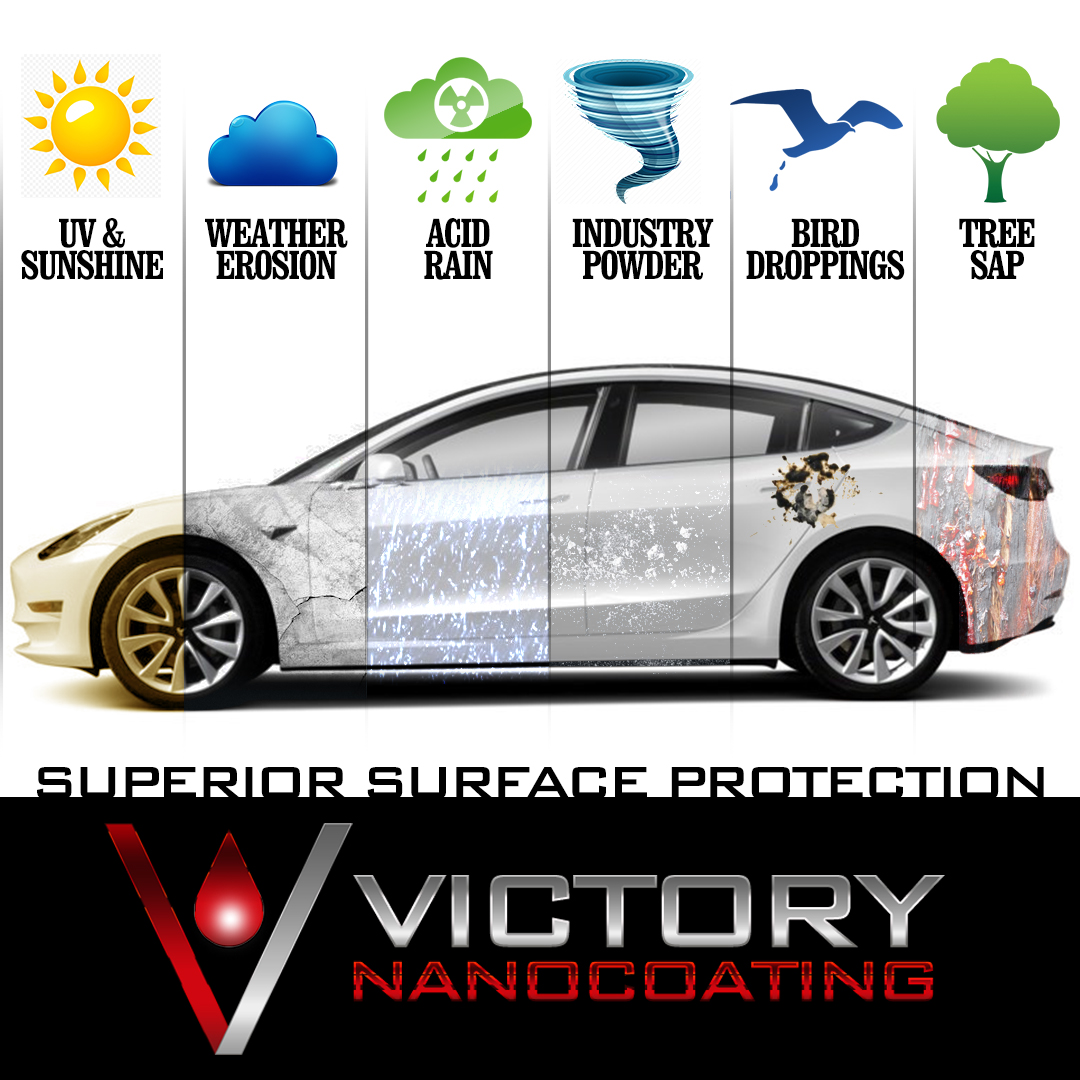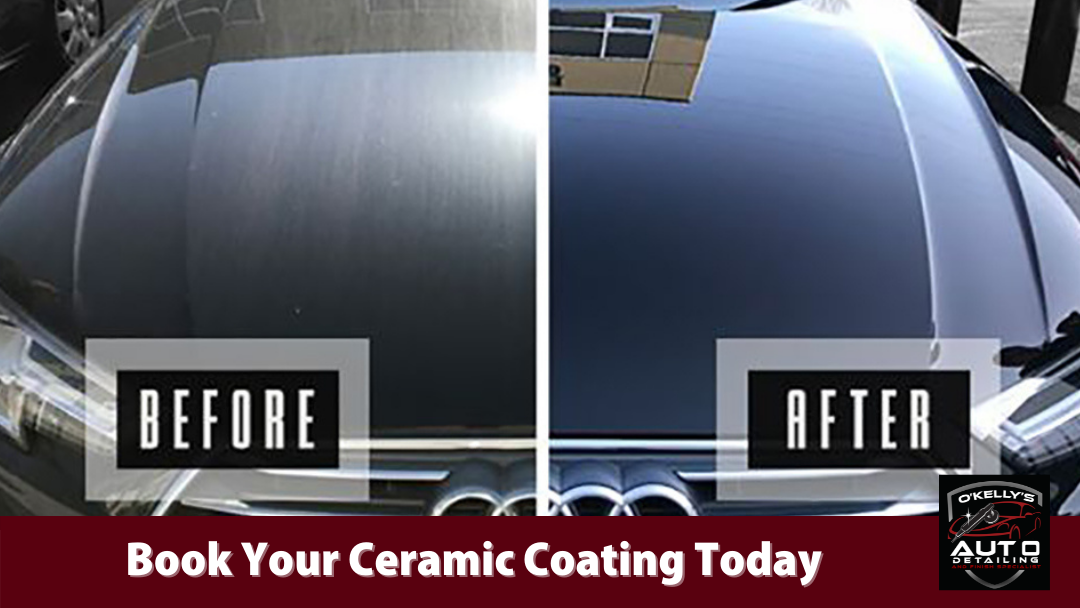Final Touch Auto Works Ceramic Coatings vs. DIY Kits: What You Need to Know
Final Touch Auto Works Ceramic Coatings vs. DIY Kits: What You Need to Know
Blog Article
The Ultimate Guide to Ceramic Coatings: Enhancing Your Vehicle's End up and Resilience
Ceramic finishes could be the service you have actually been searching for if you're looking to raise your car's appearance and security. These innovative coverings bond with your automobile's paint, developing a sturdy obstacle against environmental damage. However just how do they compare to traditional wax? Comprehending the advantages and application procedure can make a substantial difference in your automobile treatment routine. Let's explore what makes ceramic finishings a rewarding investment for your vehicle.
What Are Ceramic Coatings?
Ceramic coverings are advanced protective layers that enhance your automobile's outside. They're made from a liquid polymer that chemically bonds with your automobile's paint, creating a durable shield. Unlike typical wax or sealants, which disappear with time, ceramic coverings supply lasting defense versus ecological pollutants like UV rays, dirt, and chemicals.When you use a ceramic coating, you're purchasing an obstacle that drives away water, making it less complicated to cleanse your automobile and keeping it looking newer for longer. This technology aids protect the integrity of your paint, reducing the risk of scratches and oxidation.Ceramic layers can be found in different formulations, each made to satisfy different demands and preferences. You can choose a do it yourself kit or choose specialist application, depending on your convenience degree and budget plan. In general, ceramic finishings represent a cutting-edge remedy for maintaining your automobile's aesthetic allure and longevity.
Advantages of Ceramic Coatings
When you buy a ceramic coating, you reveal an array of benefits that surpass mere aesthetic appeals. To start with, it gives outstanding protection versus ecological contaminants like dust, bird droppings, and UV rays, maintaining your cars and truck's paint looking brand-new longer. You'll observe that upkeep becomes much easier, as the hydrophobic homes create water and grime to move off easily. This suggests less time spent cleaning and describing your vehicle.Additionally, ceramic layers can improve the gloss of your car's surface, providing it that display room shine. They additionally offer resistance to scrapes and swirl marks, which helps maintain your lorry's resale worth. With a ceramic finish, you're not simply securing your financial investment; you're also boosting its overall appearance and durability. Eventually, this sophisticated technology guarantees your auto sticks out while enjoying long-term benefits that traditional waxes just can't match.
The Application Refine: How to Apply Ceramic Coatings
Applying a ceramic layer involves several essential steps to guarantee suitable outcomes. First, completely clean your car to remove any kind of dust, gunk, or pollutants. This guarantees the surface is prepared and clean for the covering. Next off, decontaminate the paint using a clay bar to remove ingrained fragments. Later, check the paint for imperfections and brighten it to attain a smooth surface.Once your car's surface area is prepped, apply the ceramic covering in small areas. Utilize an applicator pad to spread the layer uniformly, following the manufacturer's instructions. Permit the finish to cure for the suggested time, normally between one to two hours, depending on the product.Finally, stay clear of washing your automobile for at least a week to allow the covering bond correctly. Following these actions will aid you accomplish a sturdy, high-gloss surface that shields your cars and truck for years to find.

Contrasting Ceramic Coatings to Conventional Wax
After guaranteeing your vehicle's surface area is perfectly prepped with a ceramic finishing, it's time to contemplate just how this modern option piles up against standard wax. Ceramic coverings supply a robust layer of security that lasts for years, while wax commonly uses just a couple of weeks of sparkle. You'll notice that ceramic finishes bond with your paint, developing a hydrophobic surface that wards off water and dust, making maintenance easier.In contrast, standard wax rests on top of the paint and requires frequent reapplication. With ceramic finishings, you obtain superior scratch resistance and UV security, assisting to stop fading and oxidation. While the initial investment for a ceramic finish is higher, the long-term benefits frequently exceed the expenses. If you're looking for resilience and improved gloss, ceramic layers are a clever selection over conventional wax.
Upkeep Tips for Your Ceramic Covered Car
To maintain your ceramic-coated automobile looking excellent, routine maintenance is vital. Start with a gentle laundry using a pH-balanced shampoo; avoid rough cleaning agents that can weaken the layer. Make use of a microfiber clean glove to stop scratches and constantly wash completely to eliminate any type of soap residue.After cleaning, completely dry your cars and truck with a soft microfiber towel to avoid water places. Take into consideration using a ceramic maintenance spray every couple of months to improve the finishing's hydrophobic buildings and include an extra layer of protection.It's also a good idea to prevent automatic car cleans with rough brushes, as they can damage the finish. Instead, select hand washes or touchless wash alternatives. Furthermore, regularly check your automobile for impurities like tree sap or bird droppings and address them without delay to avoid etching. Adhering to these ideas will assist maintain the sparkle and toughness of your ceramic-coated car for several years to find.
Common Misconceptions Concerning Ceramic Coatings
In spite of the remarkable benefits of ceramic layers, a number of misconceptions can create confusion for car owners. One usual false impression is that ceramic finishes eliminate the requirement for upkeep. While they do provide boosted protection, routine washing and care are still vital to preserve that high-gloss finish.Another misconception is that these coverings are scratch-proof. While they give a strong layer of protection versus small scratches, they can not withstand extreme effects or unpleasant materials.Many also believe that ceramic finishings will certainly make their automobiles unsusceptible to all contaminants. Actually, they repel dirt and water however will not avoid problems like bird droppings or tree sap from triggering damages if left unattended.Lastly, some think that applying ceramic layers is a DIY task any individual can handle, but achieving a perfect application commonly requires professional competence to ensure peak outcomes.
Picking the Right Ceramic Coating for Your Vehicle
How do you pick the ideal ceramic finish for your cars and truck? Begin by thinking about the level of defense you require. If your automobile faces rough climate or regular road journeys, choose for a high-end coating that supplies superior resilience and find out here now resistance to scratches, UV rays, and web chemical stains.Next, consider the application method. Some finishings need professional installation, while others are DIY-friendly. If you're experienced, a do it yourself product might conserve you money, yet for the very best outcomes, an expert can guarantee correct application.Don' t fail to remember to examine the durability of the coating. Some last a couple of years, while others can shield for a decade or even more. Check out testimonials and testimonies to gauge individual satisfaction. By evaluating these variables, you'll discover a ceramic coating that not just boosts your automobile's look but likewise supplies long-lasting security.
Often Asked Inquiries
How Long Do Ceramic Coatings Last typically?
Ceramic coverings normally last anywhere from two to five years, depending on variables like application, maintenance, and environmental problems. You'll wish to follow appropriate treatment regimens to optimize their longevity and effectiveness.
Can Ceramic Coatings Be Applied Over Paint Scratches?
You can't apply ceramic coatings over paint scratches successfully. It's ideal to fix any scrapes first, making certain a smooth surface area - Final Touch Auto Works Ceramic Coatings. This means, the finish bonds correctly and gives optimal security for your lorry's finish
Are Ceramic Coatings Safe for All Car Surfaces?
Ceramic layers are usually safe for a lot of auto surfaces, consisting of paint, glass, and wheels. It is crucial to examine certain product standards, as some coverings might not be ideal for certain products or coatings.
Will Porcelain Coatings Protect Versus UV Damage?

Can I Do Touch-Ups on Ceramic Coated Surface Areas?
You can do touch-ups on ceramic layered surfaces, yet it's critical to make use of compatible products. Confirm the location is clean and follow correct application methods to preserve the covering's honesty and performance. Unlike look at here now typical wax or sealers, which put on off over time, ceramic finishings offer resilient defense versus ecological impurities like UV rays, dust, and chemicals.When you use a ceramic finish, you're investing in a barrier that repels water, making it much easier to clean your vehicle and maintaining it looking more recent for longer (Final Touch Auto Works Ceramic Coatings). Afterward, check the paint for blemishes and brighten it to accomplish a smooth surface.Once your vehicle's surface is prepped, apply the ceramic covering in tiny areas. Permit the coating to heal for the suggested time, typically between one to two hours, depending on the product.Finally, stay clear of cleaning your cars and truck for at least a week to let the covering bond appropriately. Take into consideration using a ceramic maintenance spray every few months to boost the layer's hydrophobic buildings and add an added layer of protection.It's additionally sensible to stay clear of automatic auto cleans with abrasive brushes, as they can harm the finish. Ceramic finishes are normally safe for the majority of automobile surface areas, consisting of paint, glass, and wheels
Report this page